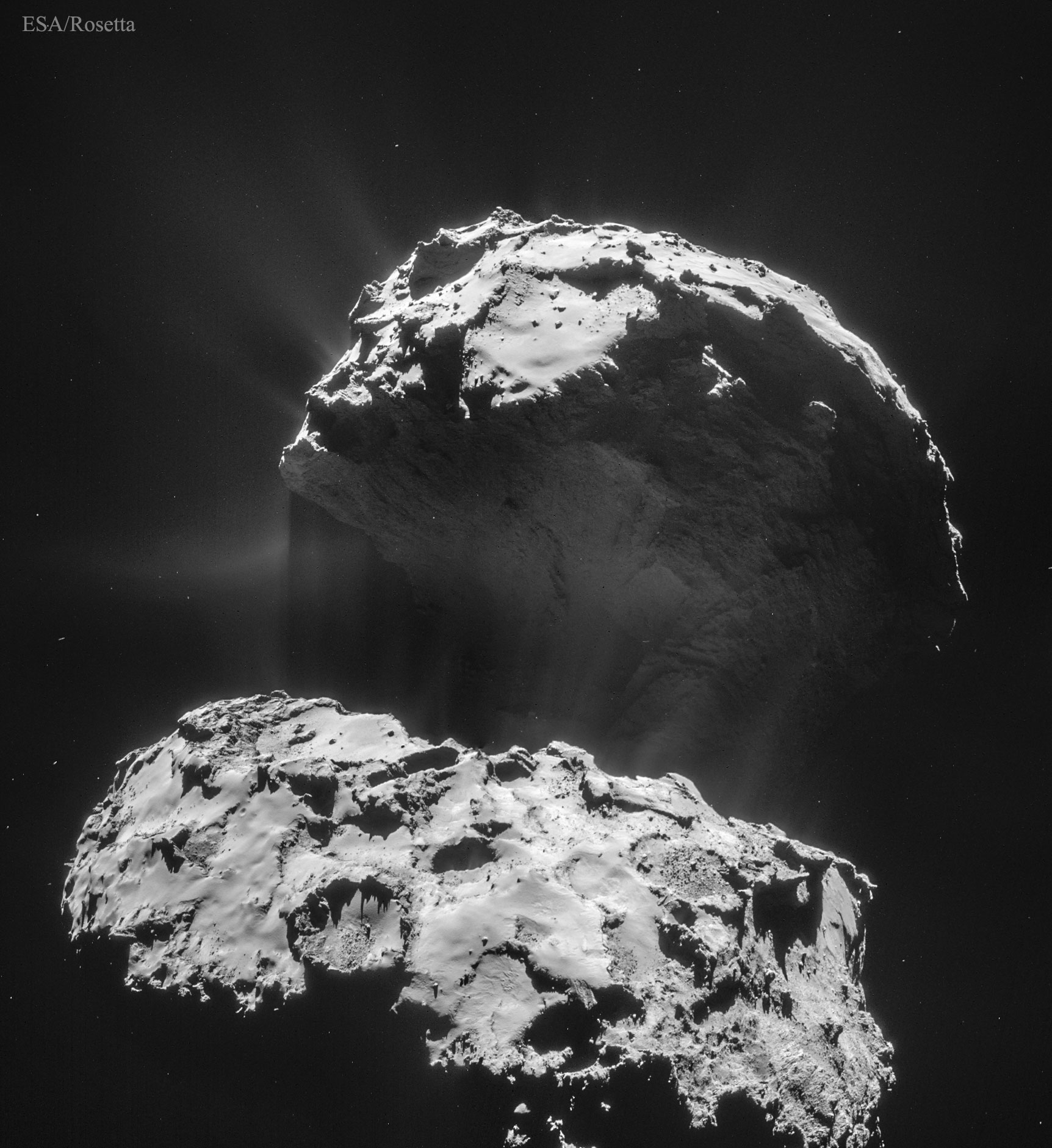
Copyright:
原文:
Spacecraft Rosetta continues to circle and map Comet Churyumov-Gerasimenko. Crossing the inner Solar System for ten years to reach the vicinity of the comet in 2014, the robotic spacecraft continues to image the unusual double-lobed comet nucleus. The featured image, taken one year ago, shows dust and gas escaping from the comet’s nucleus. Although appearing bright here, the comet’s surface reflects only about four percent of impinging visible light, making it as dark as coal. Comet 67P/Churyumov�Gerasimenko spans about four kilometers in length and has a surface gravity so low that an astronaut could jump off of it. With Rosetta in tow, Comet 67P passed its closest to the Sun last year and is now headed back to the furthest point — just past the orbit of Jupiter. Astrophysicists: Browse 1,200+ codes in the Astrophysics Source Code Library
中文翻譯:
🚀 太空探測器羅塞塔(Rosetta)繼續繞著丘留蒙-赫拉西門科彗星(Comet Churyumov-Gerasimenko)進行圍繞和勘測。經過十年穿越內太陽系,於2014年抵達這顆彗星的附近,這個機器人探測器持續拍攝這顆不尋常的雙葉彗星核。圖片是由一年前拍攝,顯示彗星核上有塵埃和氣體逸出。雖然顯得明亮,但彗星的表面其實只反射大約四%的可見光,使得它的暗度像煤炭一樣。
丘留蒙-赫拉西門科彗星(Comet 67P)長約四公里,並且表面重力極低,有可能讓宇航員輕易跳起來。跟隨著羅塞塔,丘留蒙-赫拉西門科彗星於去年達到最近的太陽點,現在正朝著最遠的點前進,就在木星的軌道之後。
#探索太空 #羅塞塔 #丘留蒙赫拉西門科 #彗星 #宇宙探索 #科技奇蹟 #太陽系探險 #天文學魔力
快來跟我一起探索廣袤的宇宙!🌌✨
來源:NASA每日圖片


